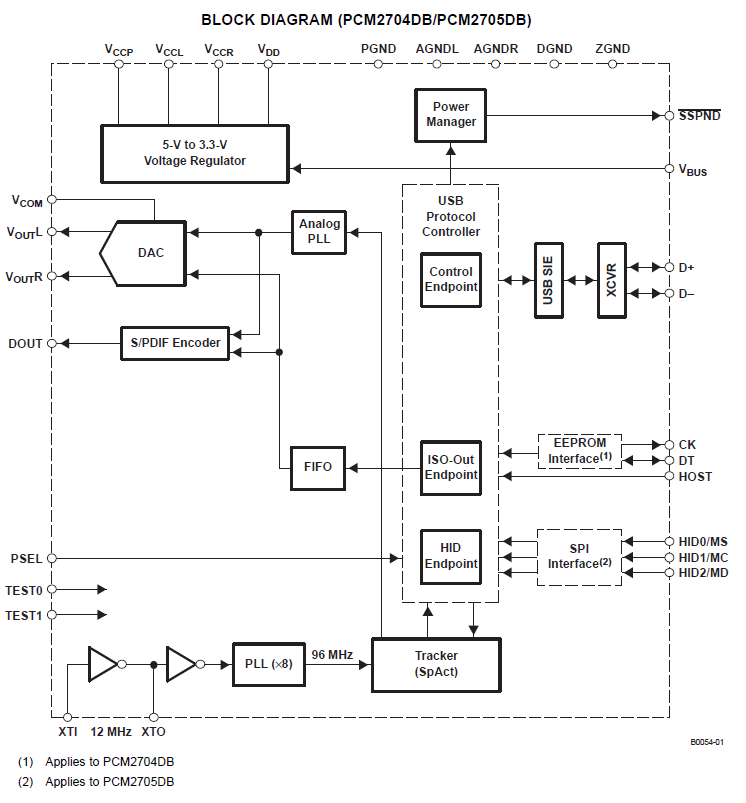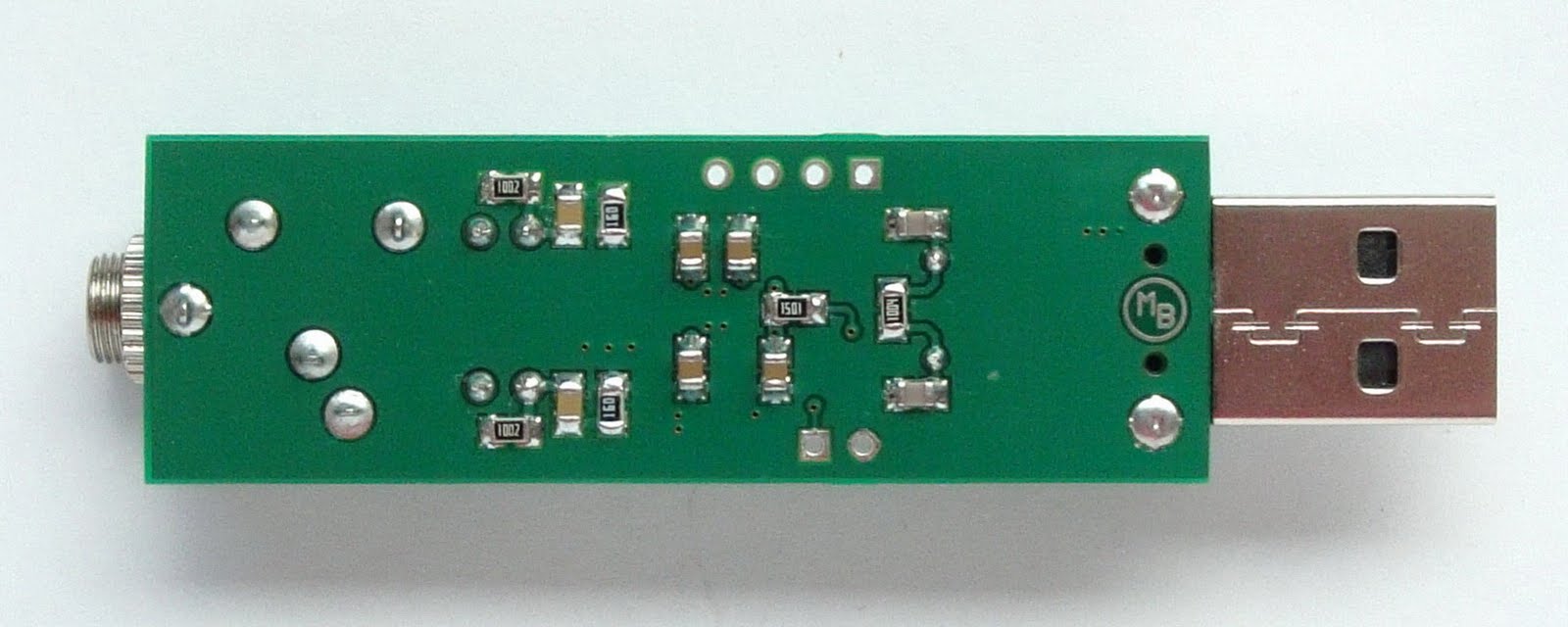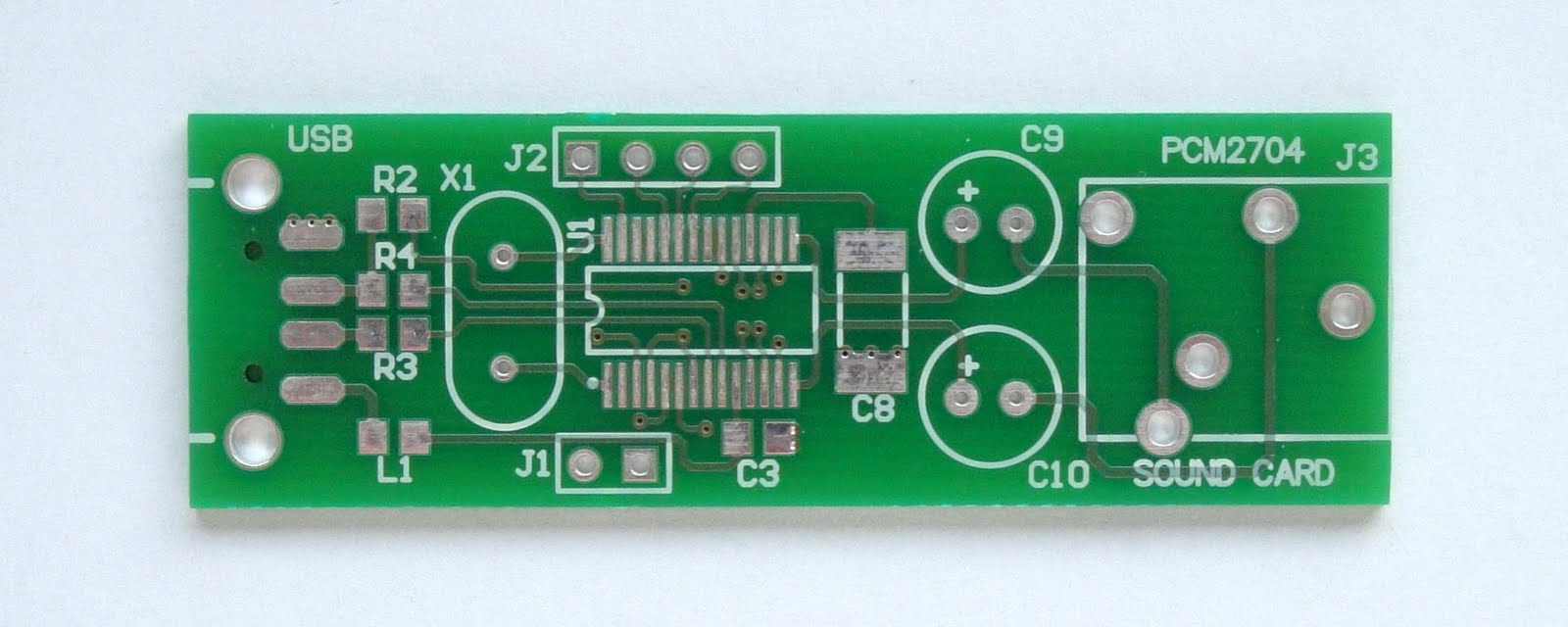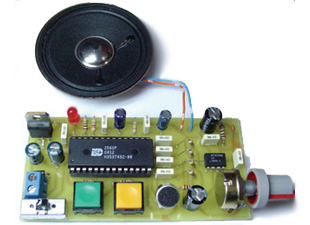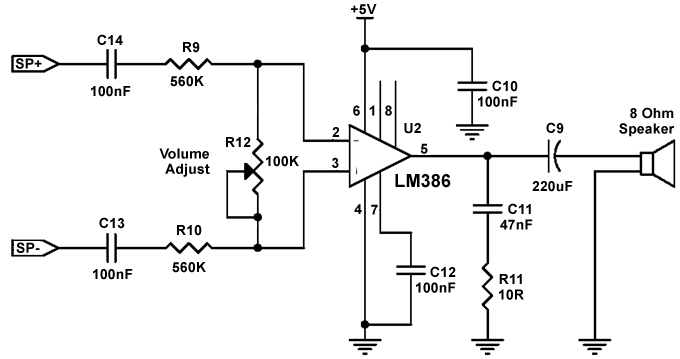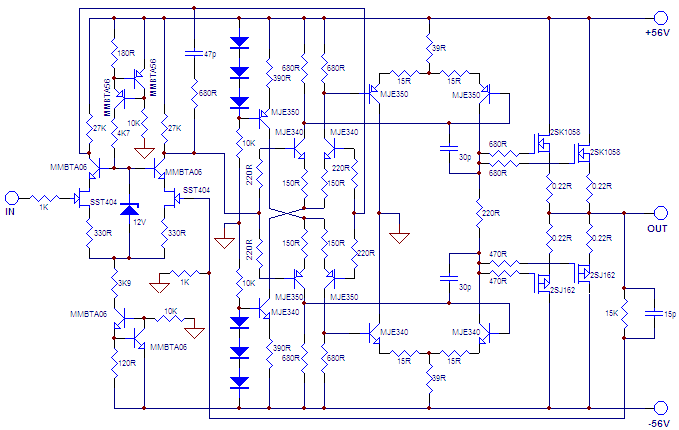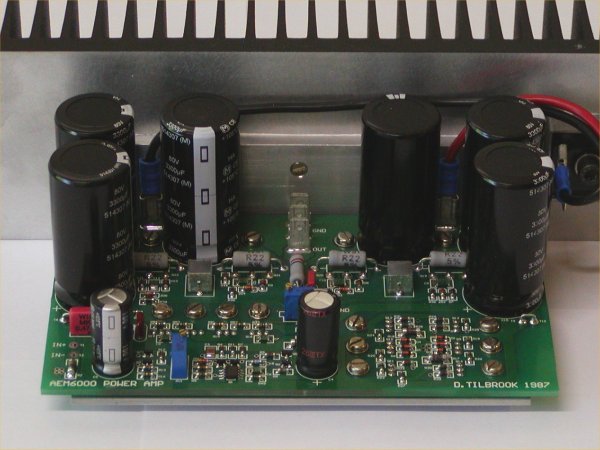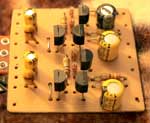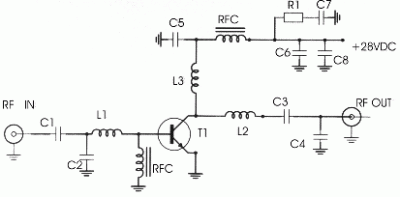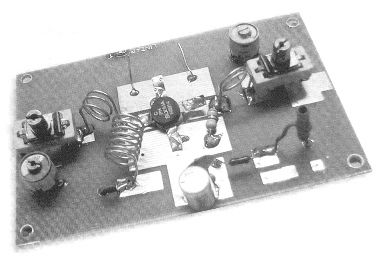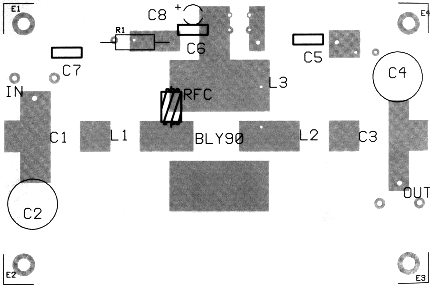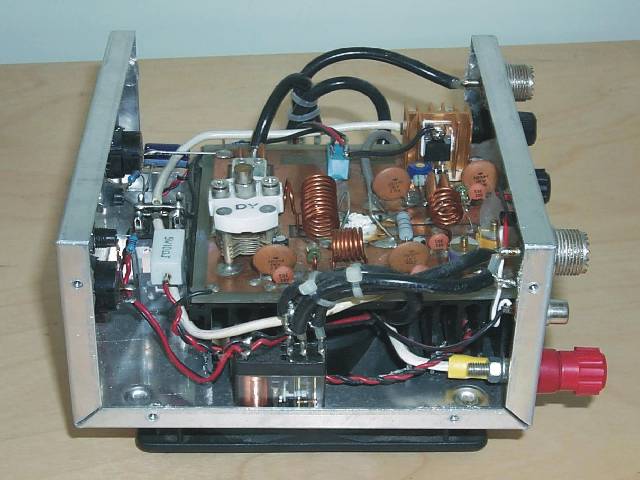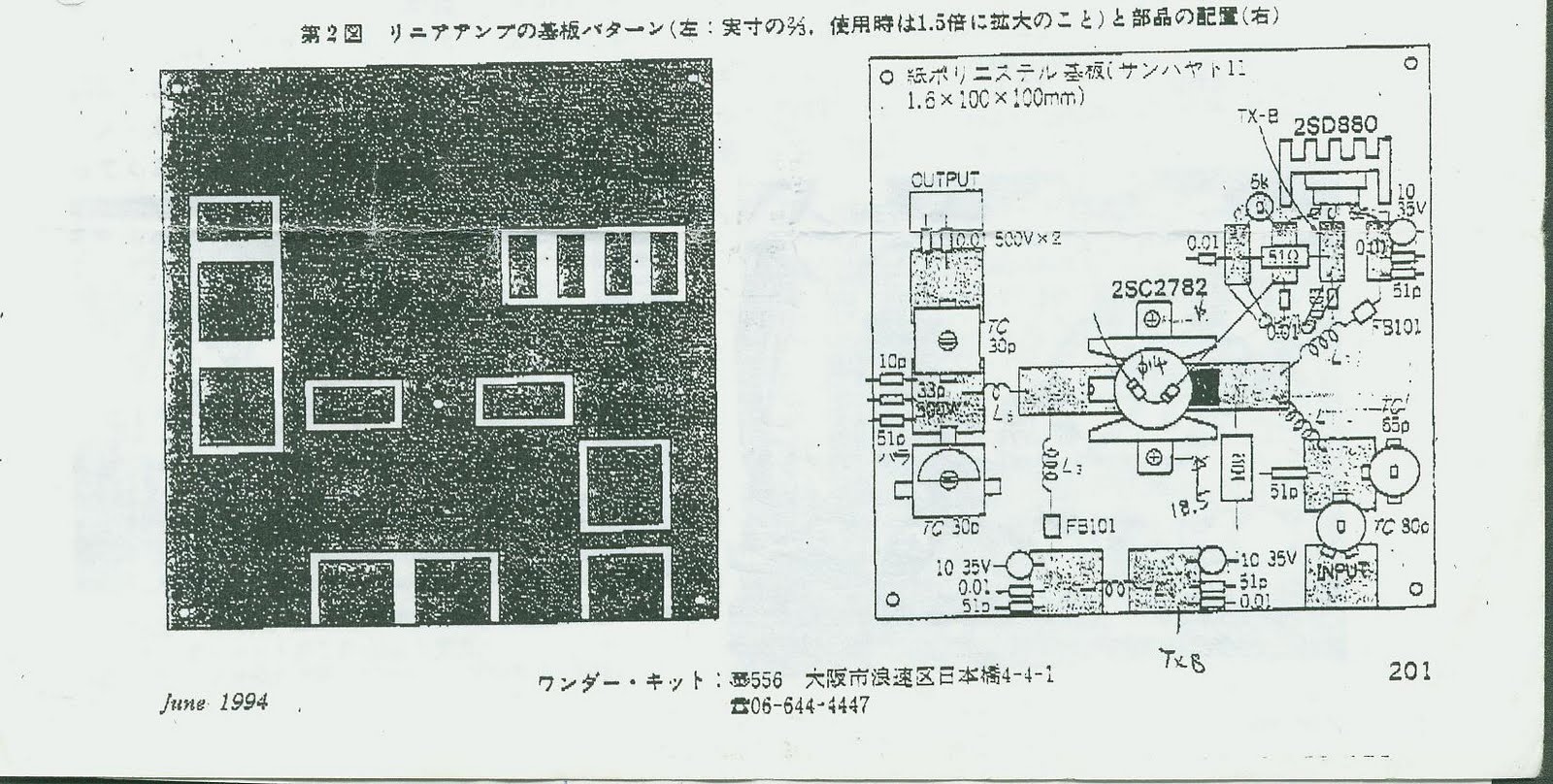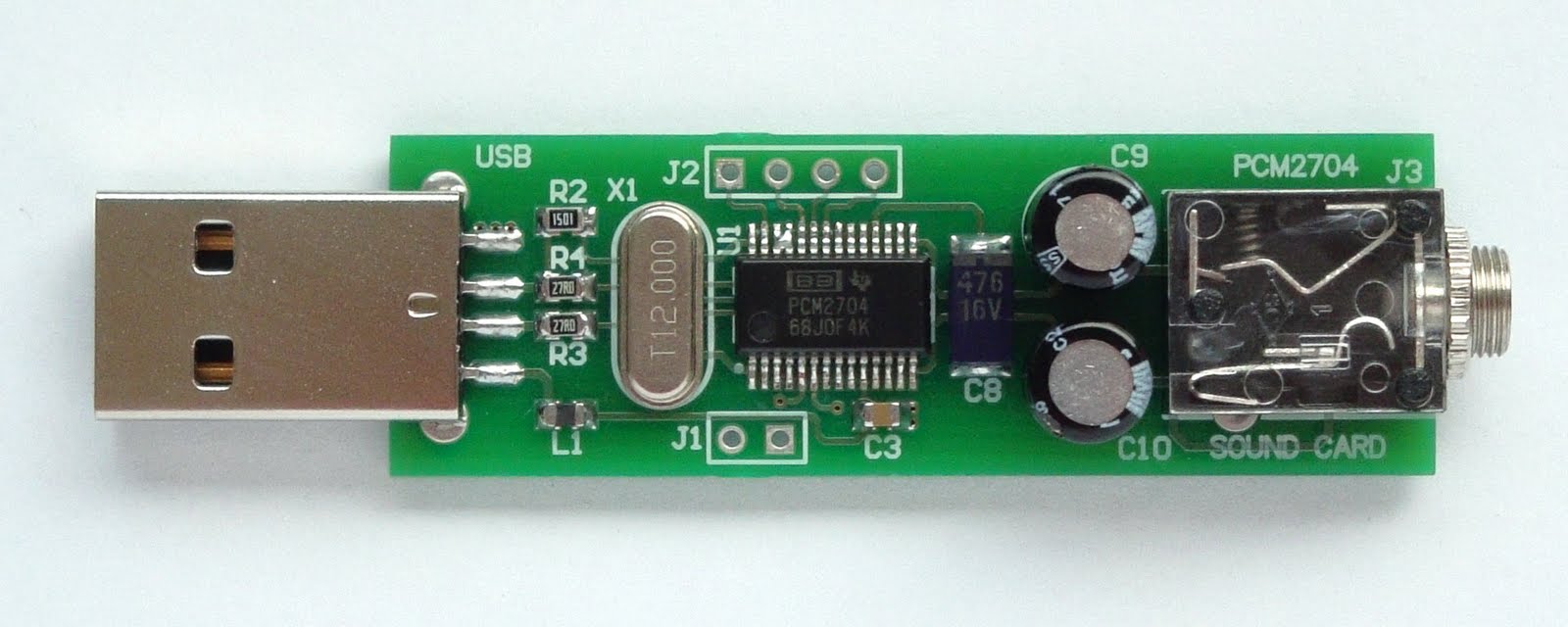
Perangkat ini penuh kartu suara fungsional untuk PC. Keuntungan utama menggunakan PCM2704 terhadap PCM2702 adalah konstruksi jauh lebih mudah. Seperti yang dapat Anda lihat pada diagram blok itu memiliki built-in 5V dan 3,3 regulator tegangan, HID antarmuka (MUTE, VOL +, VOL-), S / PDIF output. Sirkuit dapat diaktifkan langsung dari port USB. Keuntungan berikutnya adalah bahwa output DAC dapat drive langsung 32ohms headphone.
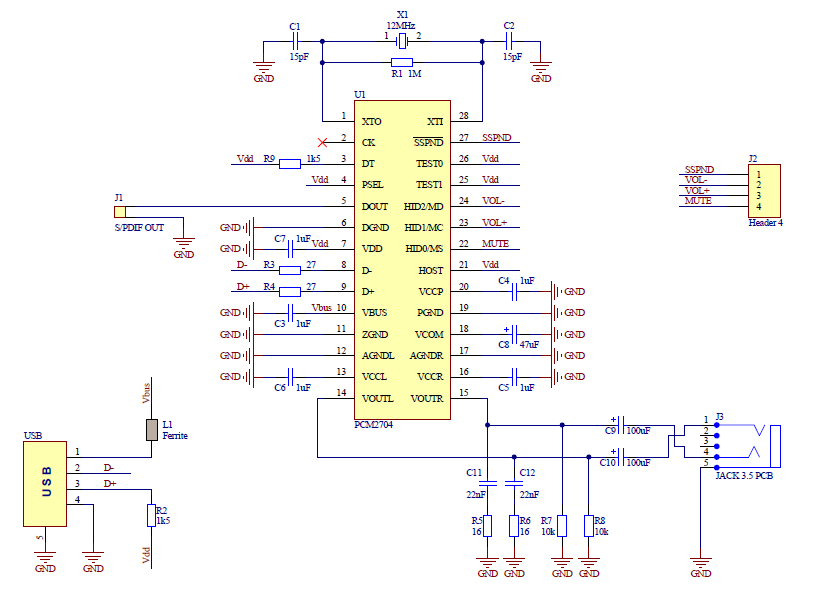
Skema sangat sederhana. Hal ini hampir salinan dari diagram sirkuit datasheet. Anda dapat melihat inti IC PCM2704 (U1), kristal dengan bagian-bagian pendukung (X1, C1, C2, R1), koneksi ke USB (USB, R2, R3, R4, L1), banyak kapasitor untuk memblokir semua tegangan (C3, C4, C5, C6, C7, C8), S / PDIF output header (J1), HID header (J2), filter output (R5, C11, R6, C12, R7, R8), kopling kapasitor (C9, C10) dan output konektor 3.5mm Jack (J3).
Saya merancang saya PCB sendiri. Dimensi dari PCB 55x18mm, termasuk USB dan Jack konektor itu adalah 73x18mm. Untuk menjaga ukuran sekecil mungkin 0805 ukuran kapasitor dan resistor digunakan. L1 adalah manik ferit yang mengurangi dengungan frekuensi tinggi. Dengan besi solder yang baik dan pengalaman litle adalah mungkin untuk perakitan PCB dengan tangan.
Saya membangun dua buah kartu suara. Saya telah menguji kartu suara di bawah Windows XP dan Windows Vista dan bekerja tanpa masalah apapun. Saya ingin menggunakan perangkat ini untuk penerima radio internet saya, yang saya sedang membangun sesuai dengan proyek yang diterbitkan pada mightyOhm.com. Penerima ini didasarkan pada Asus WiFi router WL-520GU dengan distribusi Linux OpenWRT. Kartu suara bekerja di bawah Linux juga, tapi berhenti dan mulai bermain suara periodik (periode bervariasi dari beberapa menit sampai satu jam). Saya kira itu adalah masalah driver (jika seseorang memiliki ide bagaimana untuk memperbaikinya saya akan sangat berterima kasih).
Anda dapat bertanya kepada saya mengapa untuk membangun kartu suara ketika Anda dapat membeli perangkat yang sama untuk beberapa dolar. Saya juga satu kartu suara dari Cina yang biaya sekitar 5 $ tapi kualitas suara sangat buruk, sehingga perbedaan utama adalah kualitas suara.
